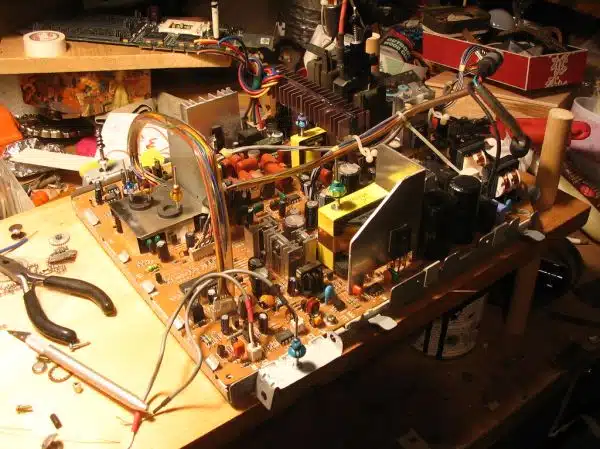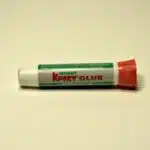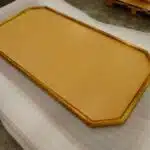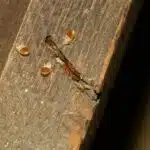In the age of Pinterest and Instagram, DIY crafts have become immensely popular, and for good reason. Not only do they provide a creative outlet, but they also offer a way to personalize your space with unique decor. One DIY project that has gained traction in recent years is the magnetic board. A magnetic board is not only functional but can also add a touch of charm to any room.
Making a DIY magnetic board may seem like a daunting task, but it is actually quite simple and can be done with minimal supplies. Whether you are looking for a place to organize your notes or display your favorite photos, a magnetic board can serve as the perfect solution. In this article, we will explore the steps required to create your own magnetic board and provide tips on how to make it aesthetically pleasing as well.
Choosing The Right Material For Your Board
Did you know that magnetic boards have been around since the 19th century? In fact, they were used in classrooms as a teaching aid for visual aids and presentations. Nowadays, magnetic boards have become more versatile, serving not only as a helpful tool for education but also as a creative outlet for DIY enthusiasts. If you’re planning to create your own DIY magnetic board, one of the most crucial decisions you’ll have to make is choosing the right material.
Wood vs metal: which material is best for your DIY magnetic board? Each material has its pros and cons. If you’re looking for something lightweight and easy to work with, wood might be the better option. However, if durability and strength are what you’re after, metal would be an ideal choice. Keep in mind that the type of material you choose will affect other aspects of your project such as thickness and size.
How to choose the right thickness for your magnetic board? The thickness of your board will depend on factors such as the weight of the objects you plan to put on it and how strong your magnets are. A good rule of thumb is to use a thickness between 1/16 inch and 1/8 inch if you plan on using small magnets or light objects. For heavier items or larger magnets, go for a thicker board – anywhere from 1/4 inch to 3/8 inch should suffice.
Measuring And Cutting Your Board
Before beginning the project, it is important to accurately measure the board in order to ensure the desired dimensions.
Cutting the board should be done with a saw that is sharp and capable of making a straight cut.
Marking the measurements on the board can be done with a ruler, a pencil, and a straight edge.
It is important to use a carpenter’s square to ensure the measurements are accurate.
When cutting the board, it is important to use a saw guide to ensure a straight cut.
Measure twice and cut once to ensure the board is cut accurately to the desired size.
Measuring Board
When making a DIY magnetic board, measuring and cutting your board to the right size is crucial. To ensure accuracy, it is important to start with an even surface. Use clamps or weights to secure your board in place before measuring. This will help prevent any movement that could throw off your measurements.
To measure your board accurately, you’ll need some basic tools such as a ruler, tape measure, or framing square. Start by measuring the length and width of your board, making sure to note the exact measurements. If you’re making multiple cuts, label each piece accordingly to avoid confusion. Additionally, always double-check your measurements before cutting to prevent any mistakes.
When it comes time to cut your board, make sure you have the appropriate tools for the job. A circular saw or jigsaw are popular choices for cutting boards, but if you don’t have access to these tools, a handsaw can also work well. Remember to always wear protective gear such as safety goggles and gloves when handling power tools. With these tips for accuracy and the right tools for measuring and cutting your board in place, you’ll be well on your way to creating a functional DIY magnetic board that will serve you for years to come.
Cutting Board
To create a functional DIY magnetic board, measuring and cutting your board to the right size is crucial. Accurate measurements are needed to ensure that your board fits perfectly in its designated space. Once you have measured the dimensions of your board, it’s time to cut it. This subtopic will discuss how to properly cut your board.
When it comes to cutting your board, there are several tools that you can use. A circular saw or jigsaw are popular choices for cutting boards because they make quick and precise cuts. However, if you don’t have access to these tools, a handsaw can also work well. Before starting any cuts, make sure that the blade is sharp and in good condition.
Customizing designs and accessorizing with magnets are two great ways to personalize your magnetic board. When cutting your board, consider the design elements that you want to incorporate into it. You may want to add decorative edges or unique shapes that reflect your personal style. Additionally, think about what types of magnets you will be using on your board and ensure that they will fit properly on the surface.
By following these tips for measuring and cutting your board accurately and utilizing the appropriate tools for the job, you’ll be able to create a customized magnetic board that meets all of your needs. Remember to always wear protective gear when handling power tools and double-check all measurements before making any cuts. With some creativity and attention to detail, you’ll be able to create a functional and stylish magnetic board that will serve as an excellent organizational tool for years to come!
Marking Measurements
When it comes to creating a DIY magnetic board, measuring and cutting your board to the right size are crucial steps. Accurate measurements are needed to ensure that your board fits perfectly in its designated space. Measuring tips include using a tape measure or ruler and double-checking all measurements before making any cuts. It’s also important to consider the design elements that you want to incorporate into your board when taking measurements.
Once you have measured the dimensions of your board, it’s time to start marking your measurements on the surface of the board. This is where DIY tools such as pencils, rulers, and masking tape come in handy. Use a pencil to mark where you need to make cuts on the board. A ruler can help ensure that lines are straight and even. Masking tape can be used as a guide for sawing straight lines.
When marking measurements on your board, it’s essential to use precise markings and take your time. Rushing this step can result in inaccurate cuts that may not fit properly in their designated space. By following these measuring tips and utilizing DIY tools like pencils, rulers, and masking tape, you’ll be able to create accurate markings on your board that will help guide you when making cuts with power tools or handsaws later on in the process.
Sanding And Prepping The Board
After measuring and cutting your board, the next step is to sand and prep it. Choosing sandpaper is crucial in this process because it determines how smooth or rough the surface will be. A fine-grit sandpaper such as 220 is ideal for a magnetic board project. Be sure to remove any sawdust or debris from the board before moving on to the next step.
Applying primer is an important step in prepping your board for painting or staining. Primer helps to create a smooth surface and provides better adhesion for paint or stain. Apply a thin layer of primer using a brush or roller, following the grain of the wood. Let it dry completely before proceeding.
Using wood filler is another option if you want to create texture on your board. This material fills any gaps or cracks in the wood and can be sanded down to create a textured finish. Once you have applied wood filler, let it dry completely before sanding it down with fine-grit sandpaper. This will give your board a unique look and feel.
Transition: Now that you have sanded and prepped your board, it’s time to move on to painting or staining it.
Painting Or Staining Your Board
Did you know that the color of your workspace can greatly affect your productivity? According to a study by the University of Texas, blue and green colors promote efficiency and focus, while red can hinder performance. With this in mind, choosing the right color for your magnetic board is important for creating a functional and inspiring workspace.
Once you’ve constructed your magnetic board, it’s time to add some personality with paint or stain. Distressing techniques such as sanding or adding texture with a rag can create a rustic look, perfect for a shabby chic or farmhouse style workspace. Color combinations like black and white or navy and gold can bring sophistication to any office space.
Before painting or staining, make sure to properly prepare your board by sanding down any rough spots and wiping away dust with a clean cloth. Then, apply one even coat of primer before adding your desired color. If you’re staining instead of painting, be sure to choose a wood conditioner to ensure an even finish.
Adding a frame (optional) is an easy way to elevate the appearance of your magnetic board. A simple wooden frame painted in a complementary color will make your board pop against the wall. In the next section, we’ll go over how to add a frame without breaking the bank.
Adding A Frame (Optional)
If you want to take your DIY magnetic board to the next level, adding a frame is a great option. Not only does it make the board look more polished, but it can also provide additional support for heavier items. When choosing appropriate material for the frame, consider using wood or metal for durability and sturdiness.
Once you have selected your frame material, there are many ways you can decorate it with embellishments. You can paint it to match your decor or add decorative trim around the edges. For a more unique touch, consider using washi tape or decoupage to add patterns or designs to the frame.
Adding a frame is an optional step in creating your DIY magnetic board, but it can really elevate the overall look of the project. Consider these tips when choosing materials and decorating with embellishments to create a finished product that will not only be functional but also stylish. In the next section, we will discuss selecting the right magnets for your board.
Selecting The Right Magnets
Adding a frame to your DIY magnetic board is optional, but can elevate its appearance and make it look more professional. If you choose to add a frame, you can use any type of wood or molding that complements the style of your board. Measure and cut the pieces to fit around the edges of the board, then attach them using wood glue or finishing nails.
Once your magnetic board is framed, it’s time to select the right magnets for your needs. There are many types of magnets available on the market, each with different strengths and sizes. Some common types of magnets include neodymium (also known as rare earth), ceramic, and alnico. Neodymium magnets are the strongest and most popular type, while ceramic magnets are more affordable and have lower strength. Alnico magnets are less common but have high resistance to heat.
When choosing your magnets, consider what you will be using them for and how much weight they need to hold up. If you plan on displaying heavier items such as tools or metal objects, stronger neodymium magnets may be necessary. However, if you’re just using the board for lightweight papers or notes, ceramic or alnico magnets may suffice. Additionally, make sure to take into account the size of the magnet in relation to the items you want to display.
Now that you’ve selected your desired magnet types and sizes, it’s time to attach them to your board. This step will vary depending on whether you’ve chosen adhesive-backed or non-adhesive backed magnets. Adhesive-backed magnets are easy to apply – simply peel off the backing paper and stick them onto your board. For non-adhesive backed magnets, use a strong adhesive such as E6000 glue or hot glue gun to attach them securely in place. Make sure to give ample drying time before applying any weight or hanging anything on your new DIY magnetic board!
Gluing The Magnets To Your Board
When creating a diy magnetic board, it is important to choose the right glue for the job. An adhesive that is strong and flexible is the best choice. The glue should be applied to the back of the magnet, and spread evenly with a plastic card or spoon. Once the glue is applied, the magnets should be held in place for a few minutes to allow the glue to set.
Choosing A Glue
When it comes to crafting a DIY magnetic board, choosing the right type of glue is crucial. There are different glue types that work best with various materials and surfaces. For this project, you need a strong adhesive that can hold the magnets securely in place. There are several options to choose from, including epoxy, hot glue, and superglue.
Epoxy is known for its superior adhesive strength and durability. It is ideal for bonding metal surfaces, making it an excellent option for attaching magnets to a metal board. However, epoxy can be messy and challenging to work with due to its slow curing time. If you choose to use epoxy, make sure to follow the instructions carefully.
Hot glue is another popular choice for DIY projects due to its versatility and ease of use. It dries quickly and can bond a variety of materials together. However, it may not be as strong as other types of adhesives, so consider using more than one magnet per item when using hot glue. Superglue also has excellent adhesive strength but has the disadvantage of being brittle when dry. It is best used on smaller magnets or items that will not be subject to frequent movement or stress.
In conclusion, choosing the right type of glue for your DIY magnetic board depends on the material you are working with and how much adhesive strength you need. Consider factors such as curing time, messiness, and durability before making your selection. With careful planning and execution, your magnetic board will be functional and aesthetically pleasing for years to come!
Applying The Glue
Now that you have chosen the right type of glue for your DIY magnetic board, it is time to apply it. Different glue types require different application techniques to ensure a strong bond between the magnets and the board. For epoxy, it is essential to mix the two components thoroughly before applying them to the surface. Apply a small amount of epoxy to the back of each magnet and press firmly onto the board. Allow it to dry completely before adding any weight or pressure.
When using hot glue, apply a small dot of glue on the back of each magnet and press it firmly onto the board. Hold it in place for a few seconds until the glue dries completely. Repeat this process for each magnet, ensuring that they are evenly spaced apart.
Superglue requires a bit more precision when applying. Place a small drop of superglue on the back of each magnet and quickly press it onto the board in its desired location. Hold it in place for about 10-15 seconds until it dries completely. Remember not to use too much superglue as it can become brittle and break over time.
By following these simple application techniques, you can ensure that your magnets will stay securely attached to your magnetic board for years to come!
Creating A Magnetic Surface With Paint
Imagine a blank canvas waiting to be transformed into a work of art. With just a few strokes of a brush, colors are blended, and shapes take form. This is the same with creating a magnetic surface using paint. You have the freedom to create your own canvas and express your creativity through it.
One option for creating a magnetic surface is by using magnetic paint. This type of paint contains iron dust that allows magnets to stick onto it once dry. It’s important to note that magnetic paint can be quite expensive and may not always work as well as expected. An alternative option is to use regular primer paint and mix it with iron oxide powder, which can be easily purchased online or at hardware stores.
Once you’ve chosen your preferred method of painting, allow the surface to dry completely before testing its magnetism with different magnets. Now that you have a functional magnetic board, let your creativity run wild by adding decorative elements such as washi tape or vinyl stickers to create unique and creative designs that reflect your personality.
Adding Decorative Elements
When making a DIY magnetic board, the first step is to choose the frame. Depending on the size, shape, and type of board desired, wooden frames, pre-made picture frames, or even repurposed picture frames can all be used. Once the frame is in place, magnets can be added to the frame. Magnets can be purchased in various shapes and sizes or even made out of household items such as paper clips or bottle caps. Finally, the board can be embellished with paint to add an extra bit of personality. Paint can be used to add designs, patterns, and colors to the board, making it a unique piece of art.
Choosing A Frame
Choosing a frame is an important step in creating your own magnetic board. DIY enthusiasts are often faced with the question of whether to use DIY frames or store-bought ones. While store-bought frames may seem like a convenient option, DIY frames offer more flexibility in terms of customization. Repurposing old frames is also a great way to add character and personality to your magnetic board.
DIY frames can be made from various materials such as wood, cardboard, or even fabric. This allows you to choose the style and design that best fits your home décor. Additionally, using DIY frames gives you the opportunity to personalize your magnetic board by adding unique elements such as paint, stickers, or stencils.
On the other hand, repurposing old frames is a sustainable and affordable way to create a magnetic board. Old picture frames can be found at thrift stores or garage sales for a fraction of the price of new ones. By giving these frames a new purpose, you not only save money but also reduce waste.
In summary, choosing the right frame for your DIY magnetic board requires careful consideration. While store-bought options may seem attractive at first glance, DIY frames offer more customization options. Meanwhile, repurposing old frames is an eco-friendly and budget-friendly alternative that adds character and uniqueness to your project.
Adding Magnets
Moving on from choosing the frame, it’s time to add some decorative elements to your magnetic board. One of the most popular ways to do this is by adding magnets. Magnets not only serve a functional purpose but also add a touch of personality and creativity to your magnetic board.
When it comes to adding magnets, there are various options available. Using alternative materials such as bottle caps, clothespins, or even small toys can make for unique and eye-catching magnets. This allows you to personalize your magnetic board even further and make it truly one-of-a-kind.
In addition to using alternative materials, creative magnet placement can also enhance the overall look of your magnetic board. Play around with different arrangements and groupings of magnets to create visual interest and balance. You can also use different sizes and shapes of magnets for added texture and dimension.
Overall, adding magnets is a fun and easy way to elevate your DIY magnetic board project. By using alternative materials and getting creative with placement, you can personalize your board while also serving a practical purpose.
Embellishing With Paint
Moving on from adding magnets, another way to embellish your DIY magnetic board is by using painting techniques. Adding a fresh coat of paint can completely transform the look of your board and give it a unique touch. There are many color schemes and painting techniques you can use to enhance the overall aesthetic of your magnetic board.
Before starting, make sure to clean and prep your board properly. Sand any rough patches or imperfections and apply a base coat if necessary. Then, choose a color scheme that fits with the theme or style you’re going for. You can opt for bright and bold colors or go for a more muted and subtle palette. Painting stripes, polka dots, or other patterns onto your board can also add interest and depth.
Another fun painting technique to consider is using stencils or stamps to create designs on your magnetic board. This allows you to easily add intricate patterns without having to freehand anything. There are many stencils available online or at craft stores that cater to different styles and themes. Overall, adding paint can be an exciting way to elevate your DIY magnetic board project and make it truly personalized.
Incorporating painting techniques into your DIY magnetic board project can take it up a notch in terms of creativity and personalization. By choosing color schemes and experimenting with patterns, you can create a unique piece that reflects your individual taste. Whether you’re going for vibrant or subdued colors, there are many options available that will help you achieve the desired look for your magnetic board project.
Hanging Your Board
Once you’ve completed your DIY magnetic board, the next step is to hang it up. The good news is that there are several creative hanging options available that can help you maximize your wall space. Here are a few ideas:
- Use picture hangers: If you have a small to medium-sized magnetic board, picture hangers may be all you need. Simply attach them to the back of your board and hang the board on a nail or hook in the wall.
- Install a French cleat: A French cleat is a simple but effective way to hang larger magnetic boards securely. It involves attaching two pieces of wood together at an angle and then mounting one piece on the wall and the other on the back of your board. This creates a strong, interlocking connection that can support even heavy boards.
- To install a French cleat, cut two long strips of wood (one for the wall and one for the board) at an angle so that they fit together snugly when mounted. Attach one strip to the wall using screws or nails, making sure it’s level. Attach the other strip to the back of your magnetic board using screws or nails as well. Then simply hang your board by sliding it onto the strip mounted on the wall.
Other creative hanging options include using wire, rope, or chains to suspend your magnetic board from above, or building custom brackets that allow you to mount it at an angle. Whatever method you choose, be sure to consider how much weight your board will be carrying and use appropriate hardware.
Maximizing wall space is key when it comes to home organization, so finding creative ways to hang your DIY magnetic board can really make a difference in how functional your space is. Once you’ve hung up your board, take some time to think about how best to use it for organizing papers, notes, photos, and more. The next section will provide some tips on how to get started.
Using Your Magnetic Board For Organization
As the saying goes, “a place for everything and everything in its place.” Maximizing space is key to keeping your home or office organized. A DIY magnetic board is a great solution for creating a designated spot for important papers, reminders, and to-do lists. But now that you have your magnetic board hung up, how do you make the most of it?
One way to customize categories on your magnetic board is by using different colored magnets. Assign a color to each category such as bills, appointments, and tasks. This will not only add some visual interest but also make it easier to quickly identify what needs attention.
Another way to maximize space on your magnetic board is by using smaller magnets or even paperclips. This allows you to layer items on top of each other instead of taking up more room with larger magnets. You can also use binder clips or clothespins to attach items such as pens or notes directly onto the board.
Incorporating these tips into your organization system will help keep clutter at bay and make it easier to stay on top of your tasks. Next up, we’ll explore how you can utilize your magnetic board not just for organization but also for decoration.
Using Your Magnetic Board For Decoration
Now that you have successfully created your DIY magnetic board, it’s time to put it to use! One of the most popular ways to use a magnetic board is for art. Whether you’re an artist yourself or just enjoy displaying art pieces, a magnetic board can be a great way to showcase your favorite works. Simply attach magnets to the back of your artwork and display it on the board.
Another creative way to display magnets on your board is by using them as photo holders. You can attach small magnets to photos and then place them on the board in any arrangement you like. This allows you to easily switch out photos without having to constantly reframe them or worry about damaging the wall.
You can also use your magnetic board as a decorative memo board. Attach magnets to notes, memos, and reminders and place them on the board where they’ll be easy to see. This is a great way to keep important information organized and top-of-mind.
To give you some inspiration for how you could use your magnetic board, here are four creative ideas:
Create a gallery wall: Use your magnetic board as part of a larger gallery wall by mixing in framed artwork with magnetically attached pieces.
Make a vision board: Use inspiring images, quotes, and other materials attached by magnets on your magnetic board as motivation for achieving personal goals.
Create a rotating gallery: Switch out different pieces of artwork or photos regularly so that there’s always something new and interesting to look at.
Organize jewelry: Attach small hooks or hangers onto the magnets so that you can hang necklaces, earrings, and bracelets from them.
Now that you have some ideas for how to use your magnetic board creatively, let’s talk about how you can maintain it over time without losing its quality performance!
Maintaining Your Magnetic Board
Cleaning your magnetic board is essential for long-term use. Start by wiping it with a damp cloth to remove any dust or dirt. Once it is clean, you can apply a thin coat of paint to refresh its look. Painting your magnetic board may require multiple coats, so be sure to allow it to dry completely before the next coat. Organizing your magnetic board is the key to making it both aesthetically pleasing and functional. Utilizing containers, trays, and other organizational accessories can help keep your board neat and tidy. Magnetic boards can be a useful tool for organizing your home or office, but it is important to maintain it regularly to ensure it remains in good condition. With the proper cleaning and painting techniques, as well as organizing accessories, you can easily make your magnetic board last for years.
Cleaning
Keeping your DIY magnetic board clean is essential for maintaining its durability and functionality. Effective cleaning of your board can prevent wear and tear, leading to a longer lifespan. However, many people make common mistakes when it comes to cleaning their magnetic boards.
To start with, avoid using harsh chemicals or abrasive cleaners as they may damage the surface of your board. Instead, opt for a mild detergent solution mixed with warm water. Use a soft cloth or sponge to gently wipe down the surface of the board in circular motions.
It’s important to note that regular cleaning is necessary as dust and dirt tend to accumulate on the surface of the magnetic board. Neglecting this aspect may lead to scratches or stains that are difficult to remove later on. By following these simple steps, you can keep your DIY magnetic board looking new and functioning optimally for years to come.
Painting
Maintaining your magnetic board is crucial for ensuring its longevity and functionality. Aside from regular cleaning, painting is also an excellent way to keep your DIY magnetic board looking new. Whether you want to change the color or refresh the existing one, painting can do wonders for your board’s appearance.
DIY painting techniques can be applied to your magnetic board with ease. First, prepare the surface by sanding it lightly with fine-grit sandpaper to remove any rough spots or imperfections. Then, apply a primer that is compatible with both metal and paint. Once the primer is dry, you can start painting using a brush or roller. Be sure to use thin coats and let each layer dry completely before applying the next one.
When selecting colors for your magnetic board, consider its purpose and location. If it will be used in a classroom or office setting, neutral colors such as white or gray may be more appropriate. On the other hand, if you want to add some personality to your space, bold and bright hues may suit your taste better. Ultimately, the choice of color is up to you and should reflect your personal style and preferences. With these simple tips on DIY painting techniques and color selection in mind, you can easily maintain the appearance of your magnetic board for years to come.
Organizing
Once you’ve painted your DIY magnetic board, the next step is to organize it. Organization is essential in making the most out of your magnetic storage solutions. Before you start, decide what items you want to hang on your board and how often you’ll be using them. This will help you determine the best location for each item.
To keep things tidy, consider categorizing your magnetic items into groups such as office supplies, kitchen tools or craft materials, and assign a specific area for each group. You can also use labels or markers to identify each category and make it easier to find what you need.
If you have limited space on your magnetic board, consider using hooks or clips to maximize vertical storage. This allows you to hang multiple items on a single magnet and frees up space for other items. For larger items that may not fit on a magnet, such as scissors or rulers, attach a small hook onto the board instead.
By organizing your DIY magnetic projects with these simple tips, you’ll not only keep things neat and tidy but also make it easier to find what you need when you need it. Remember that organization is key in maintaining your magnetic board’s functionality and longevity.
Troubleshooting Common Issues
If you have encountered some problems while making your own DIY magnetic board, don’t worry. You are not alone in this process as it can be challenging at times. Common issues that people face include the magnets not sticking properly to the board or the board not being strong enough to hold heavier items.
To address these issues, there are some common solutions and troubleshooting tips that you can try. First, if the magnets are not sticking properly, check if they are strong enough for the weight of the item they need to hold. If not, consider using stronger magnets or adding more magnets in strategic locations on the board. Another solution is to apply a coat of magnetic paint or primer on top of your existing board before attaching any magnets.
If your DIY magnetic board is not strong enough to hold heavier items such as tools or kitchen utensils, one troubleshooting tip is to reinforce the back of your board with a piece of plywood. This will help distribute the weight evenly and prevent warping or bending over time. Additionally, make sure that you use screws or anchors that are appropriate for the weight and size of your board when mounting it onto a wall.
Overall, don’t be discouraged by any setbacks you may encounter while making your DIY magnetic board. With these common solutions and troubleshooting tips, you can overcome any challenges and create a functional and stylish addition to your home decor. In the next section, we will explore different magnetic board styles and designs that you can use as inspiration for your next project.
Exploring Different Magnetic Board Styles And Designs
After troubleshooting common issues in making a DIY magnetic board, it’s time to explore different styles and designs. One popular style is the rustic magnetic board that adds character and warmth to any space. This style incorporates natural elements such as wood and metal, creating a charming aesthetic.
Another exciting design option is exploring colorful designs for your magnetic board. You can use vibrant colors that complement your existing décor or create a statement piece that stands out on its own. With so many color options available, you’re sure to find one that suits your taste and personality.
When designing your magnetic board, keep in mind the purpose of the board and how it will be used. If it’s for displaying artwork or photos, consider using a frame or border to make the pieces stand out. Alternatively, if it’s for organizing notes and reminders, incorporating pockets or clips can be helpful.
There are endless possibilities when it comes to designing your DIY magnetic board. Whether you choose a rustic style or opt for colorful designs, remember to have fun with the process and let your creativity flow!
Conclusion
When it comes to creating a DIY magnetic board, there are several steps you can follow to ensure that your final product is functional and visually appealing. It all starts with selecting the right material for your board and taking accurate measurements for cutting. Once your board is sanded, prepped and painted/stained, you can add a frame for an extra touch of elegance.
After completing these steps, you’re left with a versatile and decorative piece that can be used in any room of your home. Whether you’re looking to create a message center in your kitchen or a vision board in your office, there are many ways to use your new magnetic board. With proper maintenance and troubleshooting techniques, you’ll be able to enjoy this DIY creation for years to come. So go ahead and explore different styles and designs to personalize your magnetic board even further – the possibilities are endless!
Image Credits
- “Bead-bots – Magnetic Robots on Circuit Board” by Dan Zen (featured)





























